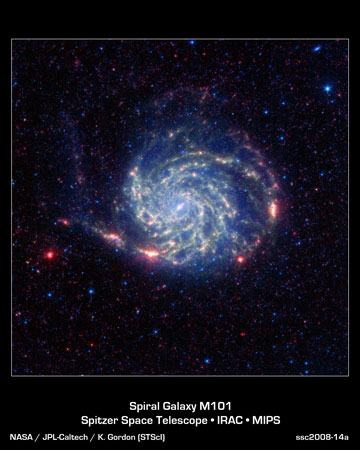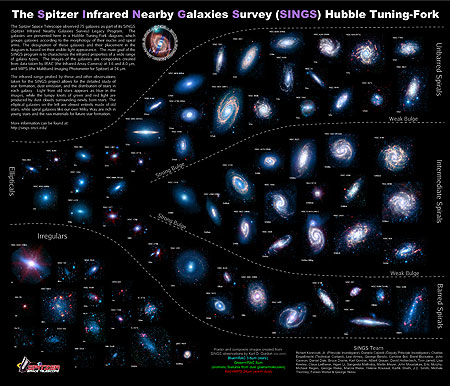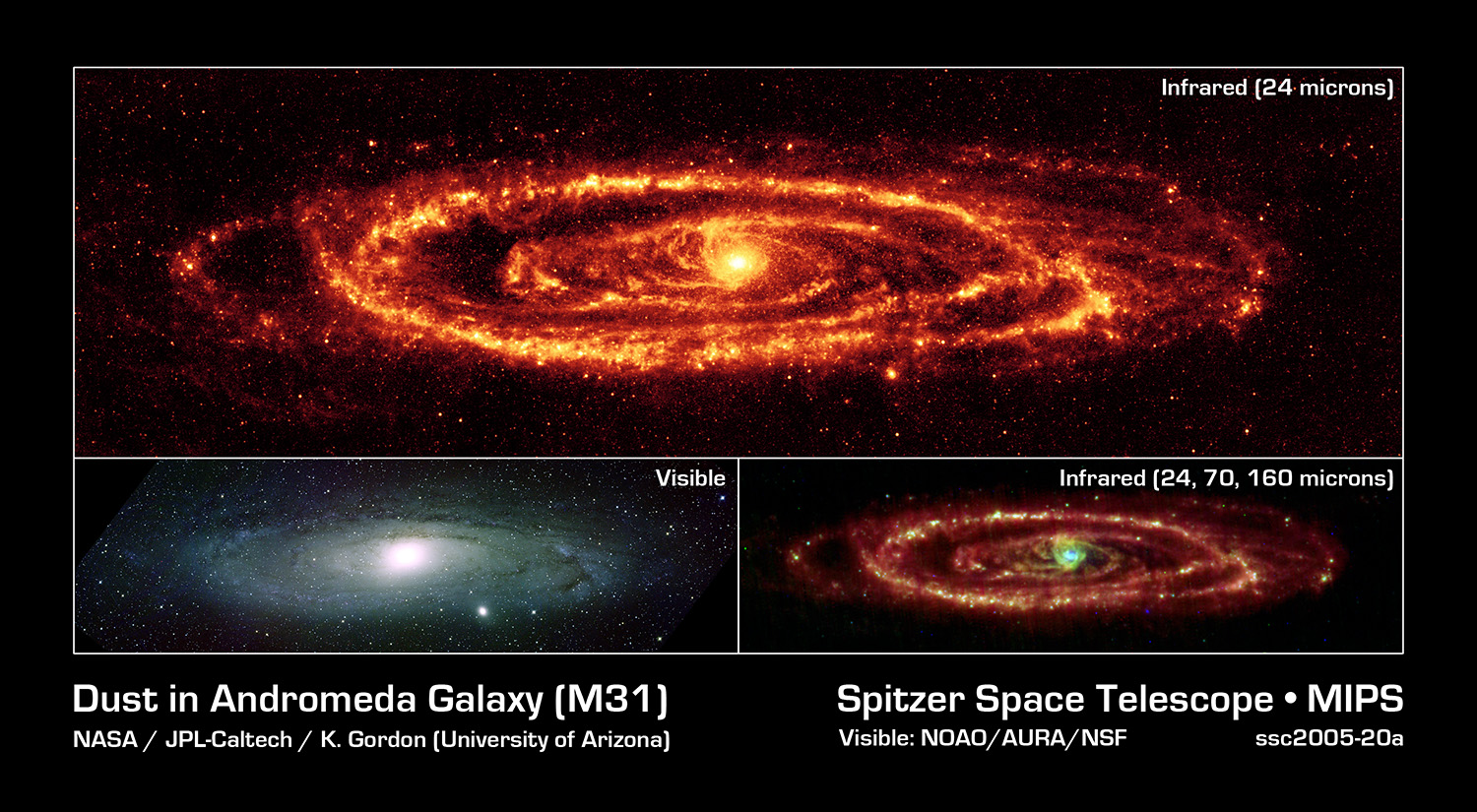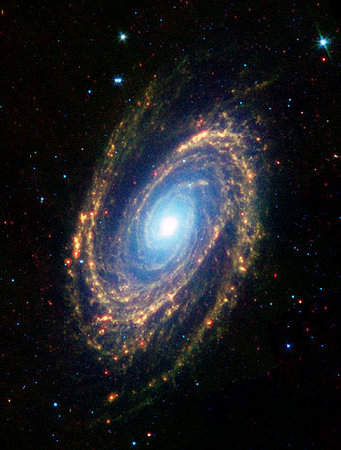Galaxy Exposes its Dusty Inner Workings in New Spitzer Image
The Small Magellanic Cloud was imaged with Spitzer using the IRAC and MIPS cameras as part of the SAGE-SMC Legacy Program. The Small Magellanic Cloud is a satellite galaxy to our own Galaxy and can be seen with the naked eye from the southern hemisphere. This color image includes data from 3.6 to 160 microns giving the full infrared view of this galaxy in one image. The SAGE-SMC program is carried out by a large international team of astronomers that are concentrating on studying the interstellar medium, star formation, and evolved stars in this neat, nearby galaxy. This image and related work [for examples, see Gordon et al. (2011), Boyer et al. (2011), and Sweilo et al. (2012)] was the subject of Spitzer Press Release at the 215th AAS meeting.






